
In all economies, production can be divided into two parts: what is sold on the market and what is allocated by the state. The part of output that is sold on the market is referred to as market output and that which is subject to state appropriation is non-market output. The non-market sector includes public services (government) which are valued on the basis of their cost, essentially wages paid. The market economy, on the other hand, includes market goods and services. The distinction between the market and non-market sectors therefore leads to a dissociation between market and non-market GDP.
In Benin, the non-market sector is growing much faster than the market sector. In other words, non-market value added is growing at a higher rate than market value added. (Figure 1).
Figure 1: Evolution of market GDP vs non-market GDP in Benin. Year 2008 = 100. BCEAO data
There is also another way of looking at the highlighted phenomenon. From 2000 to 2005, the weight of the state in relation to the private sector fell. Since 2005, the growth of the Beninese economy has been driven by the growth of the public sector (Figure 2). Without discussing the efficiency of public spending, it should be remembered that the financial resources of the non-market sector come directly (via taxes) or indirectly (via the debt, which is only future taxes) from the market sector. Therefore, if the non-market sector grows faster than the market sector, there is bankruptcy on the horizon.
Figure 2: Ratio of non-market GDP to market GDP in Benin. Year 2008 = 100. BCEAO data
Benin's drift towards a non-market mode of production poses financing problems and increases the stock of public debt. Indeed, in Benin, structural growth (GDP per capita growth) evolves in almost the same way as the stock of public debt (Figure 3). This leads to the following remark: in the case of Benin, GDP growth should not be confused with growth in market value added.
Figure 3: Evolution of public debt stock vs. per capita GDP growth in Benin. Data BCEAO, World Bank
Read the whole post

Stock market speculation is a practice which consists in carrying out a series of purchases and sales of values or financial securities with the aim of quickly realizing capital gains. Speculating is therefore betting on the rise or fall of stocks or securities without actually buying them.
There is a famous saying that one man's loss is another man's gain. In this perspective, famous American investment funds having noticed that the video game company GameStop listed on the New York Stock Exchange was in crisis, they tried to make money by betting against it. They decided to do what is called "short selling" by first borrowing massively shares that they did not own, then selling them at a high price, and then waiting for the price to drop before buying them back at a discount and returning them to the entities they had borrowed from. Their position was confirmed in mid-January by Wall Street analysts who estimated by their models that the price of GameStop shares will fall.
However, a community of amateur traders gathered on a forum called WallStreetBets thwarted all the models by believing that it was possible to get rich by betting on a rise in GameStop's share price instead. They also found an opportunity to trick the big institutional players on Wall Street by coordinating to buy massive amounts of GameStop stock and drive up its value. It was a complete success!
GameStop's stock prices have become very volatile. Prices increased by 168% between February 19 and February 25, 2021. Prices then continued to rise, reaching $264.48 on March 12, 2021. As a result, while hedge funds lost millions of dollars, amateur traders made millions of dollars, damaging the system. The hedge fund Melvin Capital, a major US investment fund,
was one of the biggest losers as he had bet on a decline in GameStop's share price. He was forced to accept huge losses by buying back all the GameStop shares sold.
previously discovered. According to the Financial Times, the known losses of Melvin Capital, for example, are estimated to be around $3.75 billion.
This situation has prompted the U.S. securities regulator, the SEC, to strengthen oversight related to
the valuation of the GameStop share price for all players, as certain strategies are not allowed on the stock exchange and no one has the right to lie or spread false information in order to raise or lower the price of a share and manipulate the market in his or her favor
From all the above, it is clear that speculation plays an active role in accelerating the rise or fall in the value of assets on the markets. It can be destabilizing for the financial markets given the strategies of speculators and the limited time horizon, i.e. the short term. An investment in shares should be considered on the long term beyond the expected quick gains, as George David maintains: "if you don't invest on the long term, there is no short term".
Read the whole post
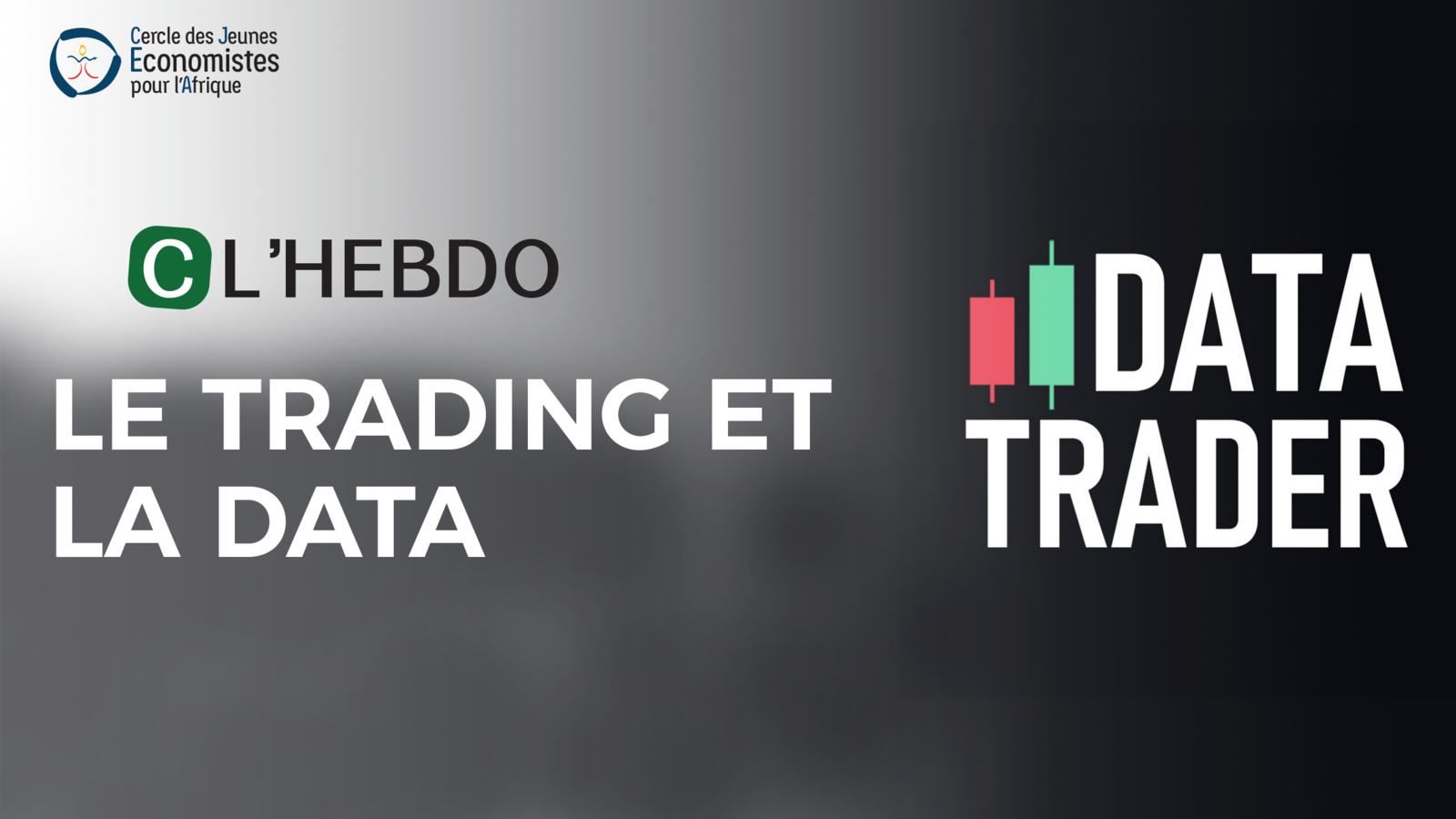
By definition, trading includes all buying and selling operations carried out on the financial markets. It is organized in two ways depending on the position of the operators (traders) who engage in it. On the one hand, we talk about traditional trading when the traders issue operations directly from the financial market room, and on the other hand, we talk about online trading when the latter involves independent traders who issue via the Internet. Who can trade?
If traditionally, this activity was carried out only in the local stock market, the development of the Internet with increasingly reduced accessibility costs, constitutes a real asset for any operator allowed to exercise as an online trader. However, it is necessary to have a very good internet connection and to be permanently connected to follow instantly the evolution of the values of the financial products in order to take advantage of it.
In terms of advantages, trading allows traders to speculate in the short term by taking advantage of the mobility of the financial products traded (stocks, bonds, etc.) on the market. However, this activity is risky, especially because of the volatility of the market and the high level of fraud, which can be explained by the proliferation of online trading platforms with deceptive but very attractive advertising. For example, in Africa, certain structures such as GLOBAL INVESTMENT TRADIND, GLOBAL TRADE CORPORATION, HIGH LIFE and CHY MALL were ordered by the Regional Council of Public Savings and Financial Markets (CREPMF) in Abidjan to suspend their activities in its communiqué of 18 March 2021 1 . These structures specializedcrypto-currency trading, among other things, offer very attractive but highly risky interest rates, sometimes putting the public at risk. What should the public do now about the risks of trading?
The Forex Brokers SA (South Africa) report, published in December 20192 states that the SEC (Securities & Exchange Commissions) urged investors in its statement issued in 2018, to be discerning so as not to fall prey to the scam seen in online trading which is much more on the rise in Africa currently.
Indeed, the data presented in the report indicates that this activity has been growing rapidly in Africa since 2019 especially in South Africa and Nigeria which occupy the top ranks. The number of traders was estimated at 1.3 million in Africa with nearly 190,000 and 200,000 for South Africa and Nigeria respectively.
Finally, trading is certainly on the rise in Africa, but this progression must be accompanied by financial education for beginners on the one hand and regulation of the exchange system by the authorities on the other. Professional training centers are already multiplying in Africa (for example, the Beninese Trading Center, CBT), not to mention the major trading schools that include trading as a course of study. In these training centers, investors as well as traders could thus acquire skills and analysis tools allowing them to have a profitability on the financial market while having the mastery of risks.
Read the whole post
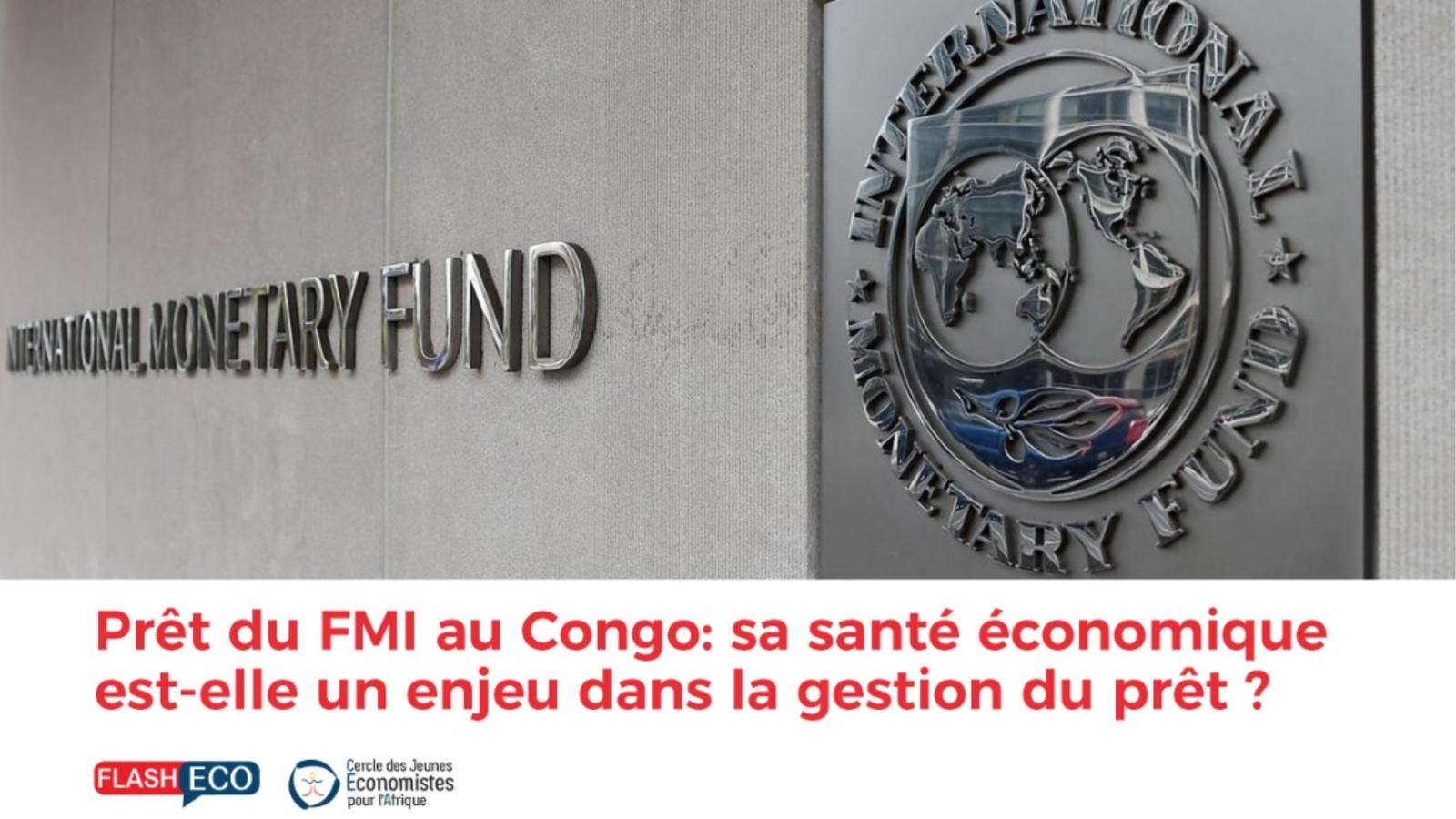
The economy of the Republic of Congo, which is essentially based on its oil revenues, has been undergoing one of the most difficult crises since the fall in oil prices in 2014. Between 2013 and 2017, the world price of oil fell by an average of 15.5%1 each year, i.e. a 49% drop over the entire period. This has led to a drop in the rate of growth of economic activity, to -10% in 2016.
Figure 1: Oil prices and GDP growth rate (annual %)
Source: CJEA, IMF, World Bank.
With total public debt representing 117.5% of its GDP in 2017, this complex situation led the Republic of Congo and the Executive Board of the International Monetary Fund (IMF) to a loan agreement for US$ 448.6 million on 17 July 2019. This agreement under an extended credit facility is an IMF programme that prioritises structural reforms and targets governance for better economic diversification and inclusive growth. It also works towards fiscal rebalancing and debt restructuring. Finally, the programme aims to strengthen human capital through the protection of vulnerable populations.
Following the disbursement of the first tranche (USD 44.9 million), the IMF press release of January 2020 set out the Congolese economic landscape, reporting overall growth revised downwards to 2.2% in 2019, due to the lower-than-expected expansion of oil production. From 2020 onwards, oil production is expected to continue to decline as the oil fields reach maturity2. However, by 20243, non-oil growth is expected to increase by an average of 14% per year, but this trend will depend mainly on the performance of agriculture and transport.
Figure 2: Projected non-oil growth (%), 2021-2024
Source: CJEA, IMF.
The country's external public debt has increased significantly since 2010. There is a significant accumulation of external trade arrears, notably to oil traders4 (18.1% of GDP). In addition, domestic public debt has also increased from 15% of GDP in 2014 to 25.5% in September 2019. China provides the bulk of external financing and Congo's external debt to China in September 2019 was USD 2 213 million, or 20.4% of the Republic of Congo's GDP. Although the two countries have reached an agreement to restructure Congolese debt (to China)5 , the total external public debt remains unsustainable. Indeed, the ratio of the present value of external public debt to GDP stands at 46% in 2021, above the sustainability threshold of 30%.6
The end-June results of the IMF assessments of the programme7 are considered mixed. Both quantitative budgetary targets have been met. These are the floor for the basic non-oil primary balance and the ceiling for the government's net domestic financing. The achievement criteria setting a zero ceiling for non-concessional financing and new external debt guaranteed by future natural resource revenues were also met. There was, however, an accumulation of new external arrears of about USD 20 million, thus failing to meet the continuous external arrears achievement criterion. In addition, the three indicative targets related to non-oil revenues, poverty reduction expenditures, and disbursements of external loans for investment projects were also not met.
In the end, the disbursement of the first tranche of the July 2019 programme was the only one.
Now affected by the Covid-19 pandemic, the National Social Security Fund has benefited from an IMF loan of CFAF 200 billion to ensure the payment of pensions in the private and parapublic sectors. It should be remembered that the arrears of payment on pensions and social benefits represent 3.4% of GDP in 2019 (IMF).
Given the debt arrears, structural budget deficit, and IMF assessments concerning social spending deemed insufficient, and in the context of a global pandemic, will the Republic of Congo manage the latest IMF loan efficiently for the benefit of its population?
Read the whole post

In response to the global recession caused by the COVID-19 pandemic, several countries around the world have put in place an economic stimulus package that can stem the effects of the crisis and put them in a situation close to that which prevailed before the pandemic. Estimates from the International Monetary Fund (IMF, 2021) show that global budget support in 2020 was approximately $14 billion. Despite funding difficulties, African countries are not on the sidelines of these plans by becoming "Keynesian". Expansionary fiscal policy is being used to support aggregate demand and achieve development goals. According to the IMF's latest forecast published in January 2021, these additional support measures in these countries, combined with the recent approval of several vaccines, have led to an upward revision of global economic growth forecasts for 2021 by 0.3 percentage points from the previous forecast. Although according to Blanchard et al (2010), the 2008 crisis reaffirmed the value of fiscal policy as a countercyclical instrument, should African economies automatically expect a return to their pre-crisis levels through increased public spending?
Theoretically, several economists have explained the relationship between government spending and growth by emphasizing its components. For example, Keynes (1936) considers government spending as an exogenous factor that can be used as a policy instrument to promote economic growth. In this sense, he considers that an increase in consumption is likely to lead to an increase in the level of employment and private investment through multiplier effects on aggregate demand. Wagner (1892) showed that the elasticity of public spending in relation to gross domestic product (GDP) is greater than one. According to the "Big Push" theory presented by Paul Rosenstein-Rodan (1943), an aggregate investment program can be useful to sustain economic growth. Endogenous growth theory also argues that fiscal policies can be used to improve the efficient allocation of resources by correcting market failures especially in times of crisis. However, for economists of the "classical" school, the effectiveness of fiscal policy is not always guaranteed.
Empirically, many studies have also been conducted to analyze the relationship between public spending and growth. In the existing literature, some studies focus on a specific country, while others are applied to a set of countries in panel form. These studies have sought to analyze the direction, nature and significance of the impact of one variable on the other.
In Africa, Keho (2015) studied the causality between government spending as a percentage of GDP and real GDP per capita on a panel of nine countries. The results indicate that Wagner's law holds for Cameroon in the medium term, for Ghana in the short, medium, and long term, and for Nigeria in the long term. The Keynesian view is supported for Gabon and Senegal in the short, medium, and long run and for South Africa in the medium and short run. For Senegal, this result is consistent with Nubukpo (2007) in the long run but contradicts it in the short run. Therefore, all three countries can use public spending to stimulate their economies, as the Keynesian paradigm claims.
In the WAEMU, Tenou (1999) shows that an expansionary fiscal policy reduces per capita GDP growth in WAEMU countries. Similarly, Nubukpo (2007) shows that, except for Senegal and Togo in the long run, total government spending does not have a positive effect on growth in WAEMU economies. This result corroborates that of Ojo and Oshikoya (1995). However, Nubukpo (2007) concludes that public spending can be growth-enhancing for WAEMU economies when it is directed at investment, but is also likely to be a drag on growth when it focuses on consumption.
All these results are often contradictory, varying from one country to another and ranging from "bidirectional causality" to "non-causality" between the two variables. All these theories and empirical results have not unilaterally decided that fiscal stimulus is the most effective tool to bring the economy back to its pre-crisis level. But it is clear that the announced stimulus could create additional wealth if the emphasis is placed on productive investment. Keynesian theory, the "Big Push" theory and some empirical results obtained in a few African countries remain optimistic that fiscal stimulus plans are the key to promoting a rebound in economic activity.
Read the whole post
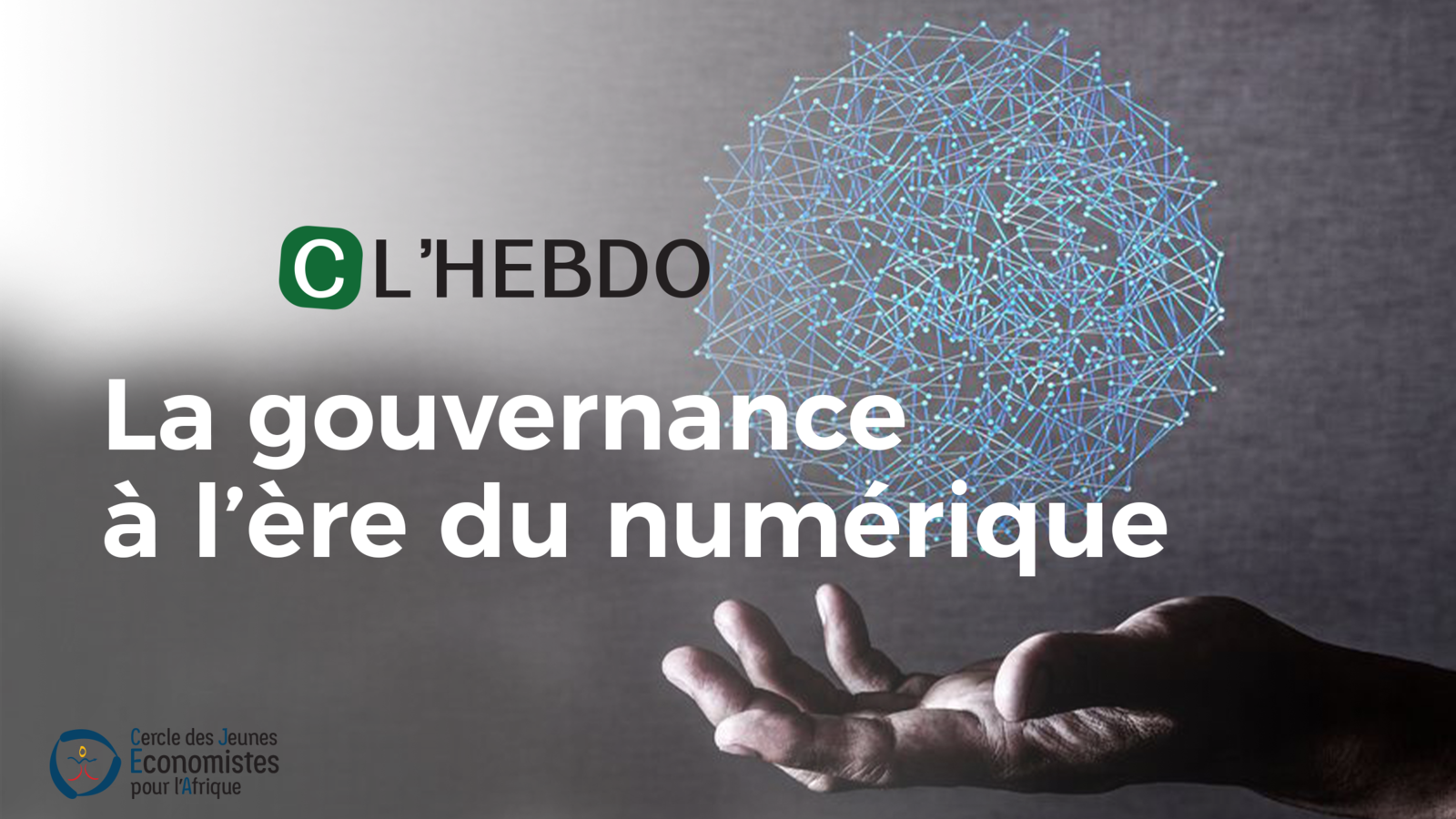
Il est important de noter les efforts consentis par l'administration béninoise, au moins en termes de structure, y compris le renforcement numérique. Mais la question fondamentale est de savoir si la révolution numérique va nous permettre de résoudre le problème de la corruption et, plus largement, de la mauvaise gouvernance au sein de nos États.
The phenomenon of corruption is well known in our countries (from the least literate in the village to the well-to-do executive in the administration). But beyond corruption, our countries suffer from many ills that slow down their development. The "government effectiveness" index proposed by the World Bank evaluates the perception of the quality of public services, the quality of the civil service and its degree of independence from political pressure, the quality of policy formulation and implementation, and the credibility of the government's commitment to these policies. This index for WAEMU countries has remained below 0. This reflects the relatively weak governance in these countries.
Indeed, in the majority of our countries, the populations do not have access to services, or the services are reserved for a part of the population that can pay.
Figure 1: Evolution of the "government effectiveness" governance indicator in WAEMU countries
Source: CJEA based on WDI/BM data
La révolution numérique, en éliminant les intermédiaires, limite les fuites et la corruption. Cependant, il reste essentiel de renforcer la qualité de nos institutions, pour une gestion efficace des revenus et la réduction des inégalités. Face à la crise du COVID-19, où le mot d'ordre pour tous les pays est «Tout ce qu'il faut», de vastes plans de relance sont en cours. Pour que ces plans soient efficaces, il est nécessaire de veiller à ce que les populations, en particulier les plus pauvres, aient un accès équitable aux services.
Read the whole post
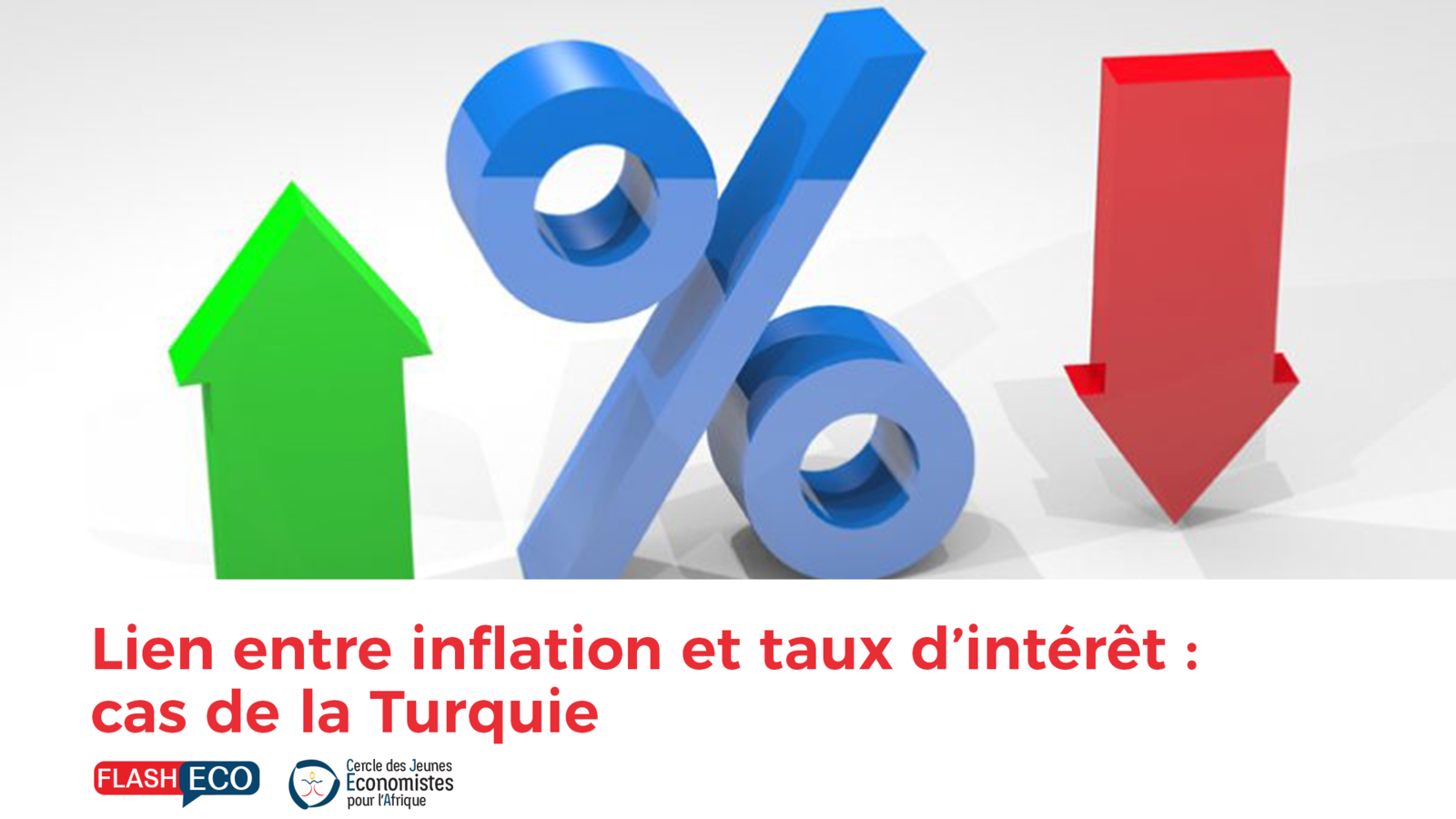
But what is going on in Turkey?
On Monday 22 March 2021 the Turkish lira fell by more than 9% against the euro.
Source: CJEA based on ECB data
An announcement that Turkish President Recep Tayyip Erdogan had sacked the head of the Turkish Central Bank, Naci Agbal, at that time seems to have had an impact on the Turkish lira.
The reason for the dismissal was a disagreement on the impact of interest rates on inflation. According to the Turkish president, lowering interest rates would stimulate strong growth (financed by cheap credits) and would eventually be beneficial for inflation.
In contrast to this theory, the now former head of the Turkish Central Bank, Naci Agbal, pursued a policy of raising interest rates in order to curb the country's rising inflation. He raised the central bank's key interest rate by 200 points two days before his dismissal was announced.
So what is the theory on the link between interest rates and inflation?
According to the commonly accepted theory, the lower the interest rate, the easier it is for households to borrow, and therefore to consume. This increase in consumption would then lead to a general rise in prices, inflation. This is known as demand-side inflation. Thus, by the same mechanism, a rise in interest rates encourages households to favour savings, thus lowering the level of consumption and then inflation.
We observe an increase in the consumer price index in March 2021 :
- compared to the previous month by 1.08%,
- compared to the month of December of the previous year by 3.71%,
- compared to the same month of the previous year by 16.19% and on the basis of twelve-month moving averages by 13.18% in March. This is one of the highest inflation rates since July 2019.
It remains to be seen what impact the various policies put in place will have on this inflation.
As a reminder, Turkey is one of the countries of destination of rubber exports (which represented 3% of goods exported by the union in 2019) of the WAEMU.
Read the whole post
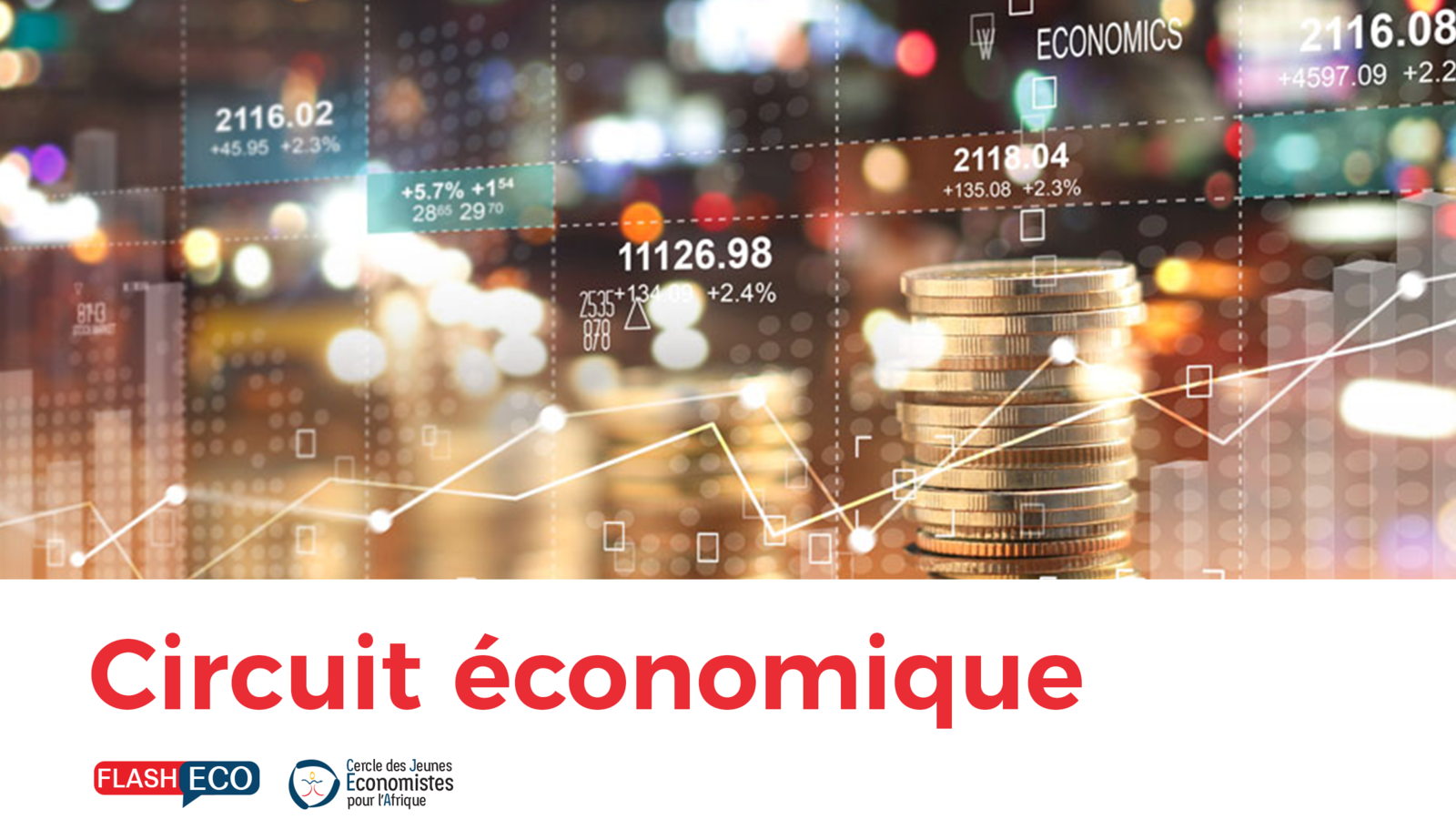
The economic activity represents the whole of the actions that must be carried out by physical or moral persons (called economic agents) in order to satisfy their needs thanks to the production of goods and services.
Economic agents are all in relation with each other. For example, households have relationships with other economic agents such as companies, banks and government agencies, which are themselves in reciprocal relationships. These exchanges are materialized by flows that represent the movement of goods and services (real flows) and the movement of money (monetary flows) between the different economic agents.
The economic circuit is a pictorial and simplified representation of economic activity that allows the essential relationships between the different agents to be described by means of flows. Each flow is characterized by its nature and the direction of movement, represented, by convention, by means of a directed arrow.
The flows are, in general, reciprocal and a real flow, work for example, corresponds, in return, to a monetary flow, the wage.
However, some flows are unilateral and therefore have no counterpart. For example, it may be a real flow that has no monetary counterpart, such as the free service of a public administration or the work of a volunteer for an association. Conversely, a monetary flow may not give rise, in return, to a real flow or a monetary flow: this would be the case, for example, for a donation made by a household to the Red Cross, which is a private administration.
An example of an economic circuit
Source : www.maxicours.com
This scheme includes financial companies, which are essentially banks or credit institutions. They finance economic agents by granting them loans (which will give rise to repayments including interest) and also manage the savings of these economic agents (deposit accounts, purchase of securities, etc.). The rest of the world includes all the economic agents (households, companies or administrations) abroad who have relations with the country.
Administrations are financed by compulsory levies (taxes, duties and social contributions), in return for which they provide free or quasi-free (non-market) services and pay social benefits (redistributed income such as unemployment benefits, scholarships...) and subsidies to companies (financial aid to develop innovation for example).
This representation of economic activity therefore reflects a global vision of economic mechanisms that allows us to understand the interdependencies between economic agents. It is an essential tool for forecasting and economic analysis.
Illustrative example
Let us imagine in this example that the State decides to increase the level of the minimum wage in Benin (SMIG), what will happen?
Thanks to this increase in the minimum wage, households will increase their consumption, which will improve the profits of companies. They will be able to expand, produce more and hire new employees. Households will also save a little more, which will increase the reserves of financial companies, which will then be able to lend more money (to companies that invest, for example).
The government's revenues will increase, and compulsory deductions will be higher because of the increase in income and consumption. The State will therefore be able to devote these new resources to health and education spending or redistribute more income to the poorest.
Finally, some of this additional income will be consumed in foreign products, which will increase imports.
The increase in the minimum wage will therefore have led to an increase in production, consumption and the income of economic agents. There will therefore be economic growth. However, this could lead to a deterioration in Benin's trade balance due to the increase in imports.
Read the whole post
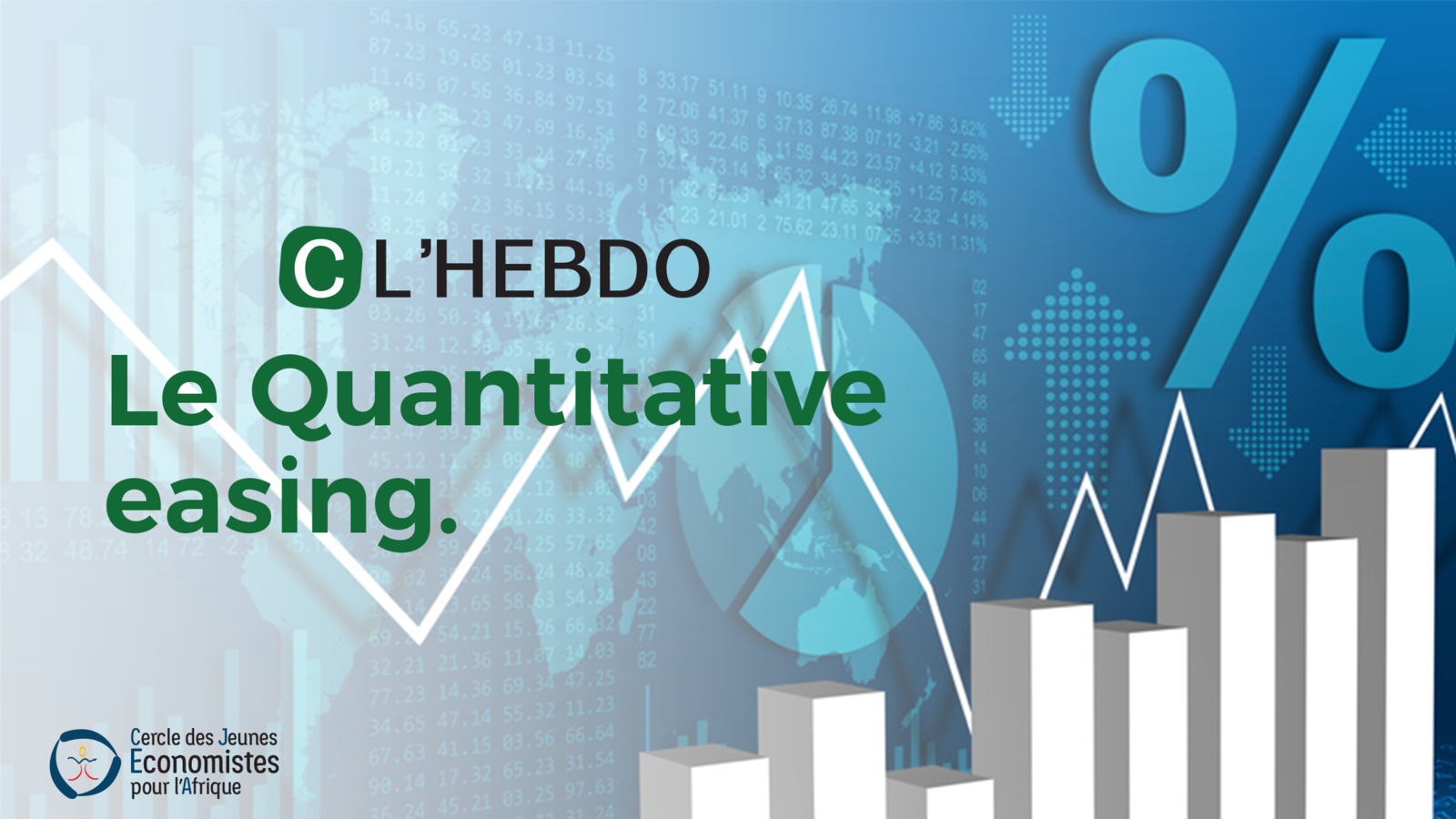
The simple play of the market is no longer sufficient to ensure the equilibrium of economies. For this reason, the public authorities (States, institutions, etc.) intervene through economic policy to regulate macroeconomic imbalances. Depending on the objective sought (price stability, external balance, growth, employment), it uses different instruments (monetary policy, fiscal policy, income policy, etc.).
Monetary policy is the instrument used by the public authorities to ensure price stability. More generally, monetary policy is <<the set of means implemented by a state or a monetary authority to act on economic activity through the regulation of its currency>>
To achieve this mission, the monetary authorities traditionally use the interest rate, which is nothing more than the price over time. Through interest rate movements, the monetary authorities can accelerate or slow down the pace of economic activity.
Since the financial crisis of 2008 and faced with the new challenges of the last decade, monetary authorities (mostly Central Banks) have resorted to a new tool called non-conventional. This is quantitative easing, better known under the anglicism "Quantitative Easing (QE)". The monetary authorities massively buy financial assets (government bonds, corporate bonds, etc.) from commercial banks and provide them with liquidity in return. The commercial banks, having thus important financial resources and in search of profitability, finance the economic activity (public and private investment projects, etc.). It is said that Central Banks inject liquidity into the economy.
In the WAMU zone, the money market is the place where authorized financial institutions exchange liquidity with the Central Bank or among themselves. It is composed of the intervention windows of the BCEAO and the interbank market. The BCEAO intervenes on this market to provide or take over liquidity in order to control the interest rates charged on the interbank market. The Central Bank intervenes in open market operations, refinancing on the permanent windows and the intraday advance window.
Tenders or open market operations are the main means of intervention by the Central Bank and are conducted through the sale, purchase or repurchase of securities or bills. They include the main liquidity injection operations with a maturity of one week, long maturities of between one (1) and twelve (12) months, liquidity withdrawal operations, one-off adjustment operations and temporary or final sales of securities on the interbank market.
In addition to the tender window, the Central Bank has set up permanent windows (marginal lending window, special refinancing window and intraday advance window) to provide back-up liquidity to eligible credit institutions on demand.
On the marginal lending window, BCEAO offers refinancing opportunities with maturities ranging from one (1) to seven (7) days, while on the special refinancing window, eligible counterparties can benefit from advances with maturities ranging from three (3) to twelve (12) months. The intraday advance window is available to participants to meet cash flow needs during a trading day. Advances from this window are repayable on the same day and are interest-free.
Access to BCEAO's refinancing windows is reserved for credit institutions and community institutions as provided for in Article 22 of the WAMU Treaty, subject to compliance with the prudential provisions applicable to banks and financial institutions as well as those governing the minimum reserve system. BCEAO's refinancing is backed by public or private bills and securities taken as collateral.
Read the whole post
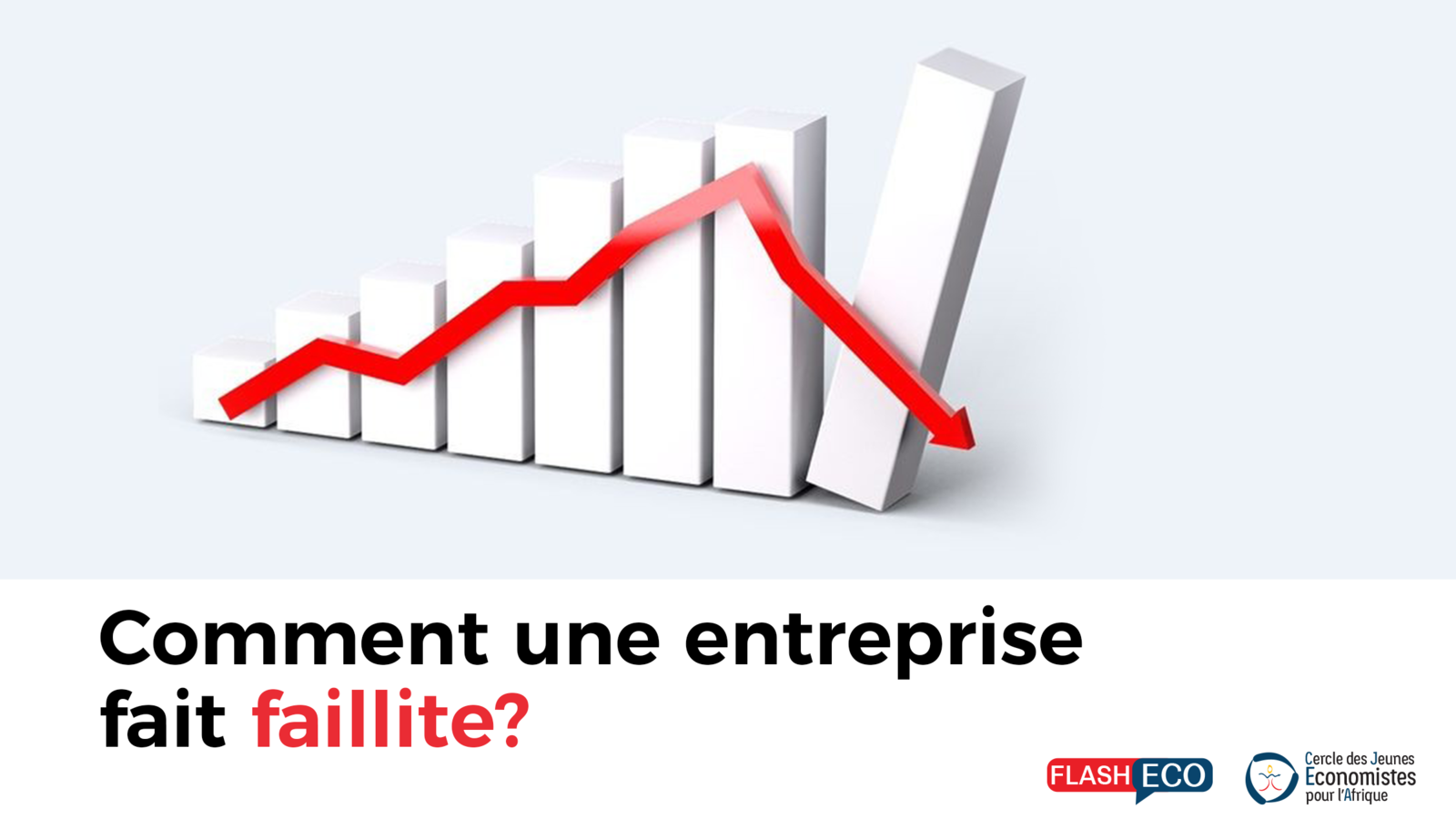
Economic crises such as the one the world has been experiencing for the past year, due to Covid-19, are all the more formidable as they threaten the survival of a certain number of companies and can lead to their bankruptcy.
Generally speaking, the economic bankruptcy of a company is declared when the latter is unable to settle its financial obligations as they fall due, in other words it can no longer cover its short-term debts (suppliers, lenders, shareholders, employees, etc.) thanks to its cash flow. In legal terms, we speak of "bankruptcy filing" or "cessation of payments".
The factors that lead to the failure of a company can be endogenous, i.e. bad management (planning, financial management, marketing...), fraud; but it can also result from exogenous factors such as lack of support from banks and financial institutions (high interest rates), competitive actions of other companies, insufficient government policies, inadequate economic sphere (slowdown of economic activity due to socio-political crisis or shocks: health crisis, natural disasters..). Whatever the causes, the bankruptcy of a company is generally not a sudden event. It is the result of a succession of organizational and financial events that have occurred in the company's environment, as well as the strategies that it will implement to face these events.
When a company is confronted with management difficulties or external shocks, and its resources are not deployed in an appropriate manner to cope with the pressures, it can enter a process of failure that is reflected in the increasing deterioration of financial indicators.
The observation of the symptoms of failure can appear gradually, we speak of a spiral of failure which is manifested by: the decrease in turnover, the decline in profitability of activities as well as the loss of market share, distrust and pressure from external partners (banks, suppliers,..). The decrease in profitability leads to a lack of liquidity which can be a factor of discouragement for the staff. Corrective actions can be implemented to rectify the situation, in particular the search for external capital through new investors or shareholders or the acquisition of new loans which increase the debt. As debt increases, expenses also increase, and profitability continues to decline. This spiral process leads to a complete deterioration of the company's financial situation and, after some time, to the company's bankruptcy, which is accompanied by legal proceedings.
Examples:
- In Benin, the company GLO MOBILE BENIN S.A. filed a declaration of cessation of payments with the Commercial Court of Cotonou in 2018 and requested the opening of a liquidation procedure.
- The former coffee and cocoa trading giant, Saf Cacao, was put into liquidation in July 2018, for cessation of payments.
- The French e-commerce platform, Afrimarket, which operated in West Africa, has filed for bankruptcy in 2019. The cause of the fall of this start-up would be the lack of maturity of the e-commerce market in Africa, as well as the fear of potential investors in the face of competition from the giant player Jumia
Read the whole post
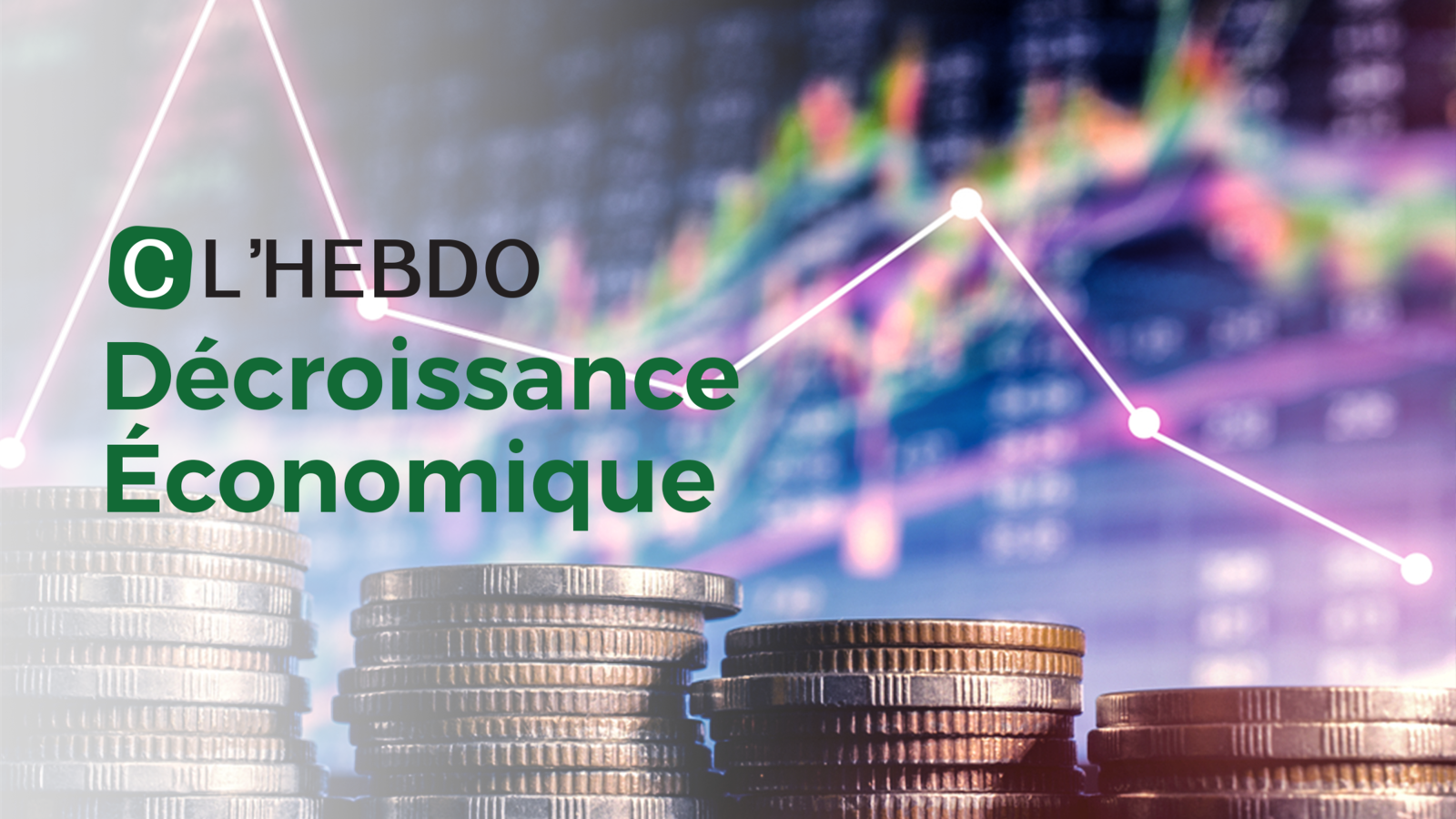
The State, individuals and companies have objectives that economics calls "needs", but they have limited means to satisfy them. Indeed, a large part of the resources of the human ecosystem (the planet) are by nature limited and therefore cannot satisfy all needs. As a result, infinite growth in a finite world is impossible. Thus, a frantic quest for growth would be hardly sustainable and in the long term harmful. Thus, each withdrawal of non-renewable resources mortgages the future as to the chances of long-term survival of humanity. In their growth models, economists have forgotten to take into account the limits of the biosphere. These different observations have given rise to the theory of economic degrowth, mainly promoted by Nicholas Gorgescu-Roegen.
It is an economic as well as a social and political concept that challenges the idea that increasing wealth leads to the well-being of society. The term "degrowth" refers to an economic situation during which the economic wealth produced does not increase or even decreases. This concept is to be distinguished from recession, which is simply the observation of a negative growth rate in a productivist economy. The concept of degrowth is a voluntary approach and not an imposed reality. It is based on the principle of awareness of a finite world, with limited resources, and on the idea that only a reduction in global production and consumption can ensure the future of humanity and the preservation of the planet. Growth cannot be infinite in a finite world.
If the positions of degrowth ideology remain a minority in the global economic concert, its themes nevertheless impact many discourses, particularly those related to sustainable development. Indeed, in the field of ecology and sustainable development, the idea that our economic model based on growth is the root of environmental problems is increasingly widespread. It is to support economic growth and the increase of GDP that the global economic system is constantly pushed towards the consumption of natural resources, the increasingly systematic conquest of ecosystems, the use of fossil fuels and chemicals... It is because of the preponderance of these economic activities and their externalities on the environment that we observe today global warming, the degradation of biodiversity or air pollution.
In degrowth thinking, there is therefore the idea that we must stop trying to produce more at the expense of nature, and that we must instead try to produce less, but better and with fewer resources.
In the end, degrowth seeks to redefine our economic model by taking resilience as its basic concept.
Few economists advocate economic degrowth, and until now they have been considered marginal. In the eyes of politicians, they were at best idealists with utopian ideas, at worst illuminated and ignorant of how the economy works. But in the light of the consequences of the containment to fight against the Covid-19 pandemic, degrowth theorists are becoming audible and their ideas are gradually entering the debate. Less production, less consumption, and consequently less extraction, less waste, less pollution, less travel, less noise..., such are the consequences of containment on the world economy. Although it is not wanted, we are currently experiencing a glimpse of what awaits us in the worst if we do not abandon the religion of infinite growth. But is degrowth feasible? It is based on the concept of decoupling, which implies a continuous growth of the GDP while reducing in a generalized way the ecological footprint linked to economic activities. But all the studies show us that this is impossible. The only time we have progress for the environment is when the economy slows down. GDP growth is based on energy consumption and material consumption.
So degrowth : utopia or reality ?
Read the whole post

For a long time, agriculture was the primary source of wealth in Benin, ahead of services and industry. Over the past two decades, however, there has been a major change: the rapid growth of the services sector fueled in particular by the rise of entrepreneurship, supported by digitalization (WhatsApp, Facebook, Instagram) and the soaring use of mobile money. In 2019, services accounted for 48.8% of GDP, compared with 28.1% for agriculture and 14.8% for industry.
Graph: Employment and value added by sector in Benin
Source: AJEB based on WB World Development Indicators data
It can be seen that the increase in the value added (as a percentage of GDP) of the services sector is accompanied by an increase in the share of employment covered by the sector. These employment figures are estimates by the International Labour Organization and may therefore underestimate the current situation.
The digital revolution and the acceleration of digitalization by the covid-19 pandemic strongly affect all sectors but especially services. Everywhere in the world, young people are reinventing themselves, entrepreneurship in the digital age, goes through digital marketing, e-commerce. Social networks (groups, WhatsApp statuses, Facebook, Instagram, Twitter) are used beyond distraction to approach and maintain its customers. The internet is now an important input of production factors. Students have at their disposal on the Internet MOOCS, online training ...
The sustainable development of the economy requires the development of the private sector, the creation not only of a favorable administrative framework but also of an appropriate environment. With digitalization, the development of the private sector and therefore of the economy requires access to digital for all.
In Benin, we are witnessing an almost duopoly held by MTN and MOOV. Today, the cost of internet connection in Benin is still quite expensive. Too expensive and its costs suffocating for the young population, entrepreneurs, and students.
zz
The minimum monthly salary in Benin is 40,000FCFA. A monthly 3GB package costs 4000FCFA or 10% of the minimum wage. The average student from a low-income family does not have the necessary means to have access to online training, MOOCs. The covid-19 pandemic has notably revealed the importance of access to the internet. Many students in the various faculties and schools in the country, found themselves unable to take courses through TEAMS, ZOOM .
Read the whole post

Creditworthiness is a rating agency's assessment of the risk that an issuer's debt will not be repaid. The latter may be a country, a public entity, a commercial or industrial company or a financial institution. This credit quality is established after rigorous analyses of qualitative and quantitative parameters.
Already in June 2019, without having been solicited by the State, Moody's Investors Service (known more simply as "Moody's") awarded the Government of Benin a first rating (B2) of issuer in local and foreign currency, with a positive outlook.
This Moody's "highly speculative" rating was based on the following factors:
a "Low" level of economic strength;
institutional strength "Weak";
A "very low" level of public financial strength with a relatively high public debt;
a "Moderate (-)" exposure to event risk.
The "positive outlook" was based on the anticipated continuation of fiscal consolidation and stronger GDP growth thanks to the successful implementation of the "Government Action Program" (PAG), which is likely to lead to a faster decline in public debt, financing needs and liquidity risks than in the scenario currently retained by Moody's.
On March 9, 2021, Moody's raised the long-term issuer and senior unsecured debt ratings of the Government of Benin by one notch, from B2 to B1 with a stable outlook, and still in the "highly speculative" category.
According to Moody's, this upgrade of Benin's rating is due to :
solid results in fiscal consolidation and improvement of the debt structure, supported by good public financial management;
increasing economic resilience, with robust growth prospects supported by ongoing structural reforms.
The stable outlook reflects Moody's mixed expectations that the economy will return to robust growth; and that Benin's fiscal and debt parameters will stabilize and improve comparatively over the medium term.
Finally, it should be noted that this latest Moody's rating is at the same level of appreciation of Benin's creditworthiness as the B+ rating with stable outlook assigned by Standard & Poor's in June 2020.
Read the whole post
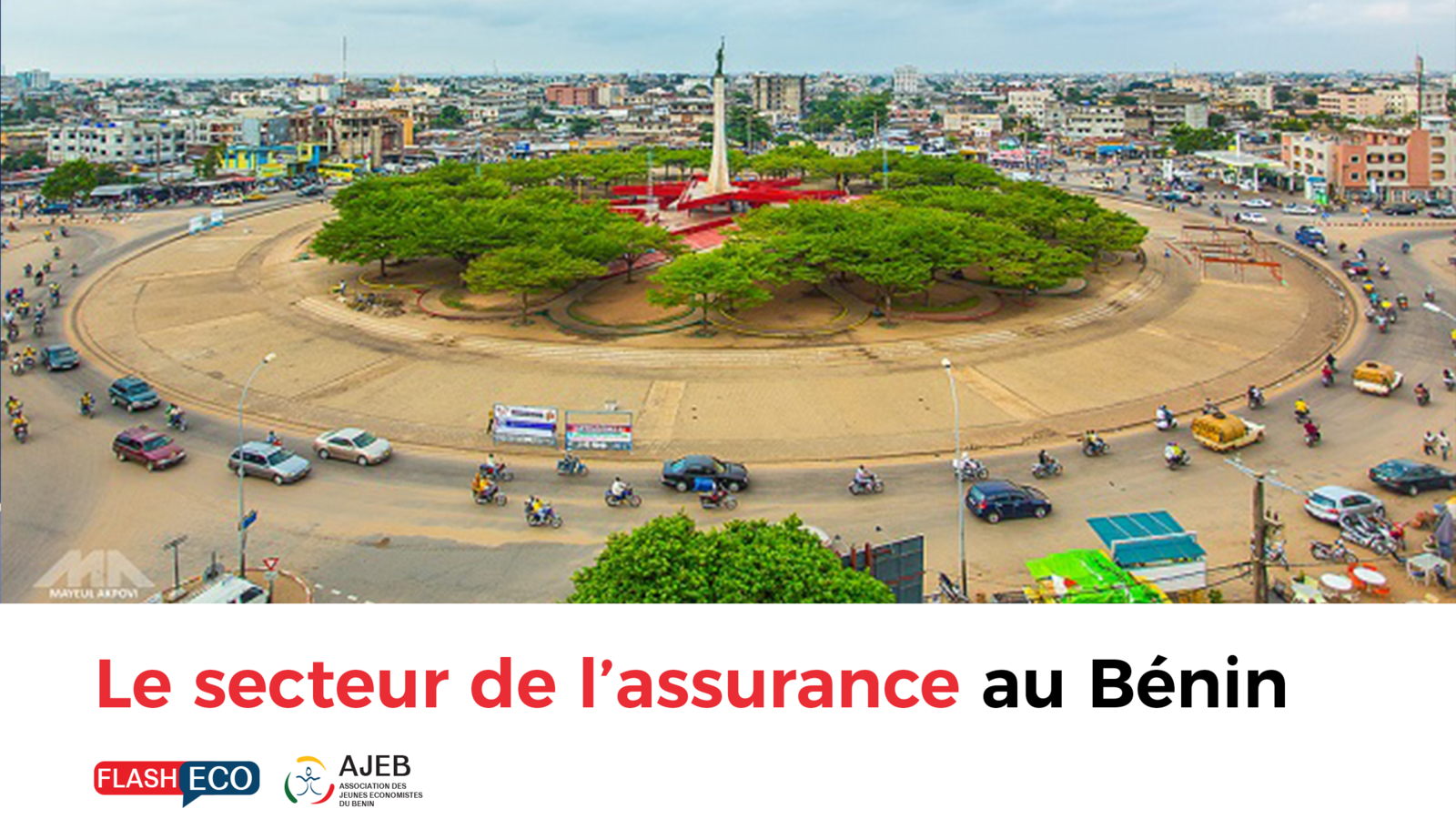
Insurance is a service of the tertiary sector of the economy that provides a service upon the occurrence of an uncertain and random event called risk.
The different insurance schemes allow to cover most of the risks of life, whether they are attributed to natural or legal persons.
Through its essential functions of risk coverage and recycling of savings, insurance plays a vital role in the economic activity of a country.
Since 1964, UNCTAD (United Nations Conference on Trade and Development) has recognized that "a soundly based domestic insurance and reinsurance market is an essential element of economic growth.
The development of the insurance sector will thus improve its contribution to economic growth.
The most commonly used indicators to judge the development of the insurance market in a given country are: the penetration rate and the insurance density.
The insurance penetration rate for a given country is calculated by expressing total insurance premiums as a percentage of the country's gross domestic product (GDP) and indicates the extent to which the insurance sector contributes to the national economy.
Insurance density in a given country is the calculation of the volume of premiums per capita. Expressed in monetary units (FCFA for West African countries), it indicates the average amount spent by each inhabitant to cover risks.
In Benin, as of December 31, 2019, the insurance sector includes fifteen (15) insurance companies, of which six (06) are in life insurance and the rest are property and casualty companies (Fire, Accident and Miscellaneous Risks).
The insurance penetration rate, which has stagnated at 0.70% since 2017, rose to 0.72% in 2019. Nearly 60% of this rate is achieved by property and casualty companies.
As for the density of insurance, it has been increasing since 2018 and stands at 4,984 FCFA in 2019. Beninese therefore spent, on average, about FCFA 5,000 on insurance coverage. The density of the life insurance branch was 2,020 FCFA.
The very slow progress of the penetration rate (quite low) demonstrates the poor development of the insurance market in Benin. The insurance culture is not well developed in Benin and the insurance sector actors at various levels must work to popularize this culture.
Source: Realization AJEB from the data of the Direction des Assurances
Source: Realization AJEB from the data of the Direction des Assurances
Read the whole post
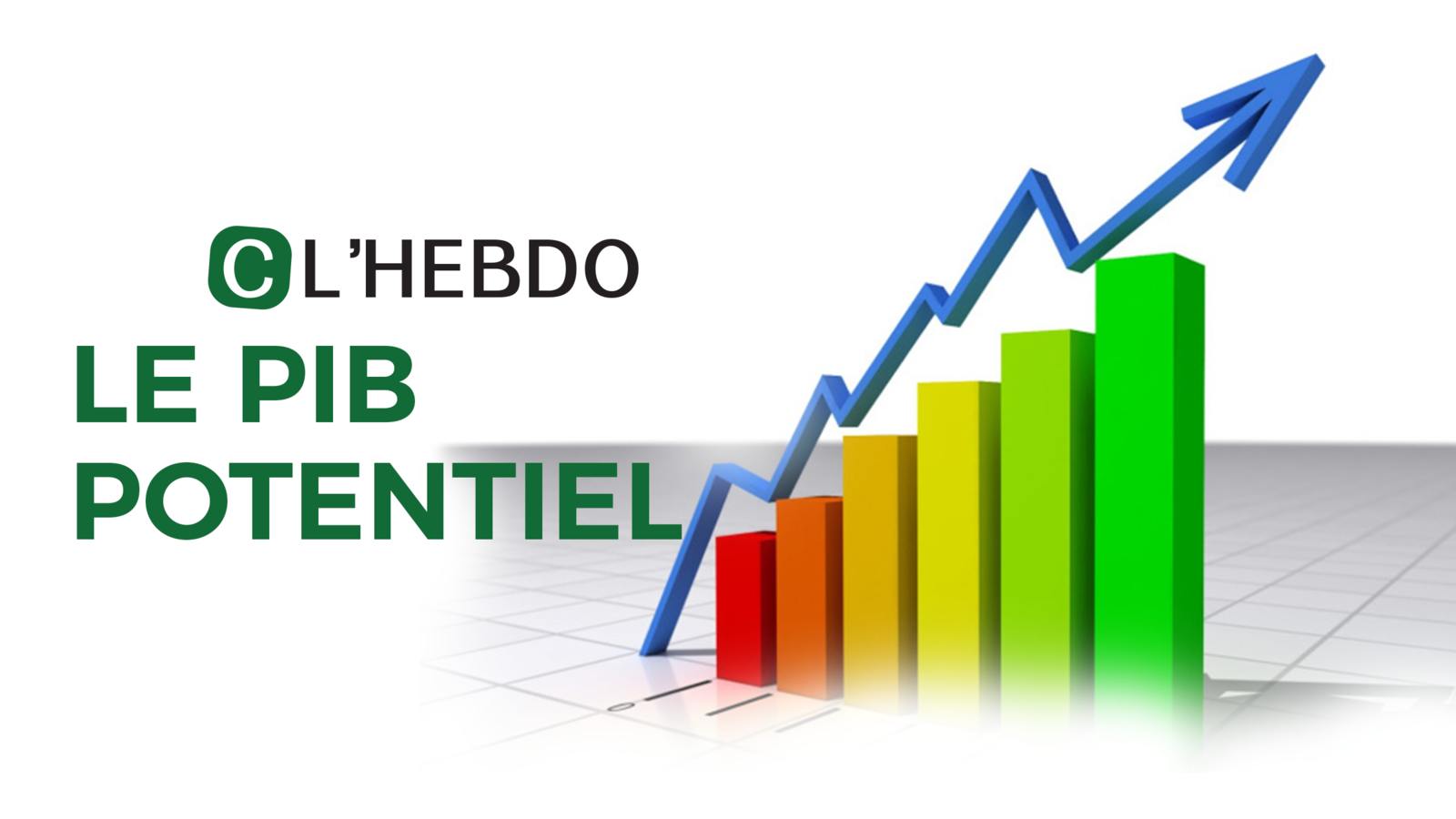
Potential GDP is the highest level of gross domestic product that the economy can sustain over the long term. Introduced by Okun (1962), potential GDP refers to an unobservable and abstract concept. The economy is at its potential level when all factors of production are at full employment. In absolute terms, full employment corresponds to a situation where all job providers are working. Theoretically, at the potential level of economic activity, there is a very low level of unemployment qualified as natural unemployment, without inflationary pressure (generalized price increases).
There are two opposing currents of thought on the notion. According to the Keynesian vision, the potential level of GDP is that compatible with an unemployment rate that does not accelerate inflation. But according to the neoclassical view, potential output is a trend concept and is driven by exogenous shocks affecting productivity and, by ricochet, aggregate supply, and "determines the long-term growth path and short-term fluctuations in output" (Abou and Melesse, 2012).
The notion of potential GDP is abstract but very important for economists and policy makers, because all economies aspire to full employment. Knowing therefore the relative position of the economy in relation to the potential level (below or above) is a decision support tool. The difference between potential GDP and realized GDP is called the "output gap".
Different measures are used to capture potential GDP that can be grouped into two categories depending on whether they are based on economic theory: non-structural methods and structural methods. While non-structural methods (e.g. Hodrick-Prescott filter and deterministic trend method) do not borrow anything from economic theory, structural methods for estimating potential output (e.g. structural VAR, DSGE, production function models) use economic theory.
Read the whole post